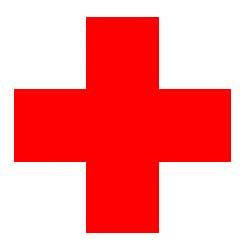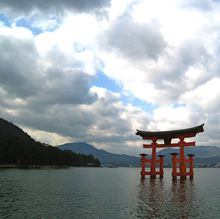Travel News
Japan Disaster Update From The International Red Cross
 The crisis in Japan may not dominate the front pages as it once did, but that doesn’t mean the story is over.
The crisis in Japan may not dominate the front pages as it once did, but that doesn’t mean the story is over.
Peter recently spoke with John Sparrow of the International Federation of Red Cross and Red Crescent Societies, who was on the ground reporting on the mental and physical challenges of relief and recovery in Japan.
Peter Greenberg: The news out of Japan keeps getting worse after the 9.0 earthquake and resulting tsunami. John, give us a situation report: Is there any good news coming out of this?
John Sparrow: There is some progress being made, particularly in opening up some areas. The main highways are being cleared in places, the electricity and power is coming back on. It’s gradual, but progress is being made. One of the figures we recently acquired is that in the Miyagi Prefecture, which was very badly affected, there is currently 15 to 18 million tons of debris. It’s calculated there is 23 years worth of waste that’s laying in this devastated area. That says a lot.
 PG: That’s hard to even fathom. The waste-removal challenges alone—when you look at the videos and see these thousand-ton boats washed up six blocks away, you can’t move those boats. You have to almost cut them up where they are.
PG: That’s hard to even fathom. The waste-removal challenges alone—when you look at the videos and see these thousand-ton boats washed up six blocks away, you can’t move those boats. You have to almost cut them up where they are.
JS: It’s going to be a long, long process. We saw that in the Indian Ocean tsunami in December 2004. Just removing what’s thrown on the community is a massive undertaking.
PG: What you think about the Red Cross, the stereotype is blankets, cots and water—all necessary, all essential. But you’re going way beyond that, aren’t you?
JS: Yes, we still have concerns for the health of those who have been affected. There are 250,000 people spread over something like 1,900 evacuation centers in 16 prefectures. The Japanese Red Cross has mobile medical teams working out of Red Cross hospitals. Not only are they assessing the ongoing situation so that we can respond, but they are dealing with basic medical and health-care issues in the hospitals.
We’re also concerned about the comfort levels of those in the evacuation centers. They are being taken care of and the authorities are doing their utmost, but at times they are very cold, the power lines are down in many places.
Learn how you can help with Japan Earthquake Resources: Aid Organizations, Charities and the Travel Industry Response
Let’s say we have a gymnasium: the common areas are heated, but the quarters people return to may not have heating and they find it difficult to sleep at night. When you imagine the trauma people have endured, we’re trying to make them comfortable. So yes, the blankets are always a part of that, sleeping kits, emergency-relief kits …
 And then we have to turn our attention to the recovery process. The government is building large numbers of prefabricated dwellings. They’re temporary dwellings so people can get out of the evacuation centers and live in family units. But someone has to heat them, provide the appliances that the families will need. They have nothing left because all they had is now in the 15 to 18 million tons of debris. The challenges are enormous. One thing that will go on for years and years and years is psychosocial support.
And then we have to turn our attention to the recovery process. The government is building large numbers of prefabricated dwellings. They’re temporary dwellings so people can get out of the evacuation centers and live in family units. But someone has to heat them, provide the appliances that the families will need. They have nothing left because all they had is now in the 15 to 18 million tons of debris. The challenges are enormous. One thing that will go on for years and years and years is psychosocial support.
PG: I want to talk about that. In the initial few days after the disaster, almost every journalist reported on the stoicism of the Japanese people, how they are able to tough it out and get through this. I don’t think that tells the whole story. We haven’t begun to touch the surface of the psychosocial effects, have we?
JS: Absolutely not. People do not wail and tear their clothes and weep publicly. When asked, “What can we do for you, what do you need help with?” people tend to point to their neighbors and say, “Well, my neighbor’s problem is this.” That’s the Japanese way. The stoicism we see every day is hiding the pain. The pain is no less for a disciplined and caring Japanese person than for anybody else. Behind that mask of being able to cope, there is another reality. They may have physically survived, but there is a kind of living death, and I think thousands of people are doing this.
PG: For those who want to help, you can text 90990 to the Red Cross to donate $10 or visit RedCross.org.
By Peter Greenberg for Peter Greenberg Worldwide Radio.
To listen to the complete interview, click here for the radio highlights.
Related links on PeterGreenberg.com:
- Japan Earthquake Resources: Aid Organizations, Charities and the Travel Industry Response
- Japan’s Aftershocks: Rebuilding Japanese Tourism
- American Airlines Forges Ahead With Japan Partnership, Other Airlines Cut Capacity
- Japan Tourism Plummets In Wake of Earthquake, Tsunami
- Japan Earthquake Damages Tourism Worldwide
- Travel Advice On Dealing With The Japan Earthquake & Tsunami
- Flights Rerouted As Japanese Radiation Leaks Affect Airspace












